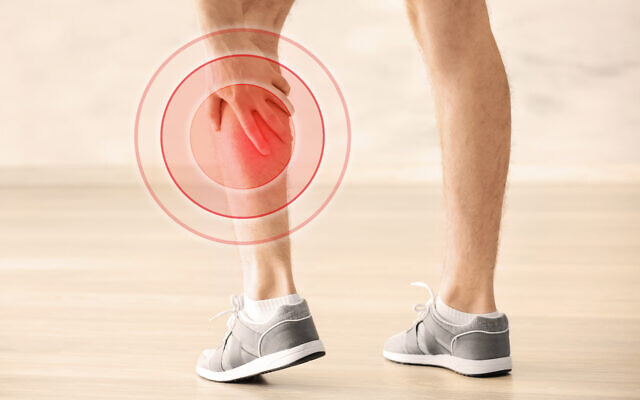How to Reduce Painful Muscle Cramps
Neurologist David Williams and gynecologist Eva Arkin share tips for dealing with muscle cramps.
Robyn Spizman Gerson is a New York Times best-selling author of many books, including “When Words Matter Most.” She is also a communications professional and well-known media personality, having appeared often locally on “Atlanta and Company” and nationally on NBC’s “Today” show. For more information go to www.robynspizman.com.
If you have even gotten muscle cramps, particularly in your leg or foot, you’ll be eager to learn how to stop or prevent them from happening. To say they are painful is an understatement, according to the sufferers who know them all too well. Muscle cramps can be a middle-of-the-night (or any time for that matter) excruciating experience. They can stop you in your tracks or wake you from the deepest sleep.

Neurologist David P. Williams, of the Laureate Medical Group, says, “Muscle cramps are involuntary contractions that occur suddenly and often with enough force to move affected joints into awkward positions. They can affect any muscle or group of muscles in the body, and most people experience them at some time of their life. They occur most commonly in the legs and feet and can either arise because of dysfunction of the muscle itself or the nerve that innervates that muscle. In most cases they are benign but can be associated with a number of conditions like dehydration or electrolyte imbalance, muscle overuse from exercise, certain medications like diuretics, or a number of neurological conditions that involve problems with the motor nerves like peripheral neuropathy. Pinching of nerves resulting from spinal disease or positioning limbs in inappropriate postures can also lead to cramps.”
“Treating a cramp acutely when it occurs mostly involves forcefully stretching the affected muscle,” Williams added. “For example, a calf cramp that results in the ankle and foot being pointed downward, one would reduce by flexing the foot the opposite direction, pulling the forefoot upwards. Doing this rapidly will significantly reduce the duration of the cramp as well as the muscle discomfort that often lingers afterwards. Because the causes of cramps are varied and not always identifiable, it is harder to make general recommendations about prevention. Staying hydrated and regular stretching exercises of the affected muscles are helpful. If someone begins to experience loss of strength or sensation in an area of the body where they frequently experience cramps, they should seek consultation by a neurologist.”
Eva Arkin, a gynecologist at Premier Care for Women, said, “Muscle cramps — everyone has gotten them. They can be very painful and are due to involuntary muscle spasms. Some can last just a few seconds to several minutes. Some people have them frequently and some have them sporadically. Most of us get a leg cramp due to no specific reason other than occasional dehydration or overuse of a certain muscle group. When there are no specific medical issues that would contribute to the leg cramps or muscle spasms, the cause usually is due to too much exercise, stress, dehydration or a restriction in blood supply (sitting in an unusual position for a long time). For the occasional leg cramp, usually walking around to increase and improve circulation can help along with either heat or ice and increasing one’s fluid intake for better hydration. Occasionally, an acetaminophen or ibuprofen can help as well.”
“Pregnant women are especially susceptible to leg cramps due to changes in the blood supply and some leg swelling due to water retention,” Arkin added. “The key to improving the reoccurrence of leg cramps and muscle spasms is good circulation with moderate exercise and improved hydration. A good stretching program before and after an intense exercise program is ideal as well to reduce the nighttime leg cramps.”

However, “If the leg cramps are persistent, and affect one leg worse than another, then seek the advice of a healthcare professional to rule out a medical cause. Pain in the leg can signal a blood clot or other circulatory issues and that should be evaluated if symptoms of leg pain exist along with any swelling or redness to the skin. Certain medications can also cause leg cramps, and you should get the advice of your physician before stopping a medication or changing it. Medical issues such as cardiovascular disease and liver disease and diabetes should be evaluated in someone who suffers from frequent unrelenting leg or muscle spasms. Most leg cramps and muscle spasms can be avoided by better hydration, walking around and stretching. Massaging the area can help along with applying heat (or cold).”
While muscle cramps have a reputation for sometimes baffling experts, Arkin’s best advice is “to hydrate well and stretch every day (if not twice a day). You don’t have to live with leg cramps.”




comments